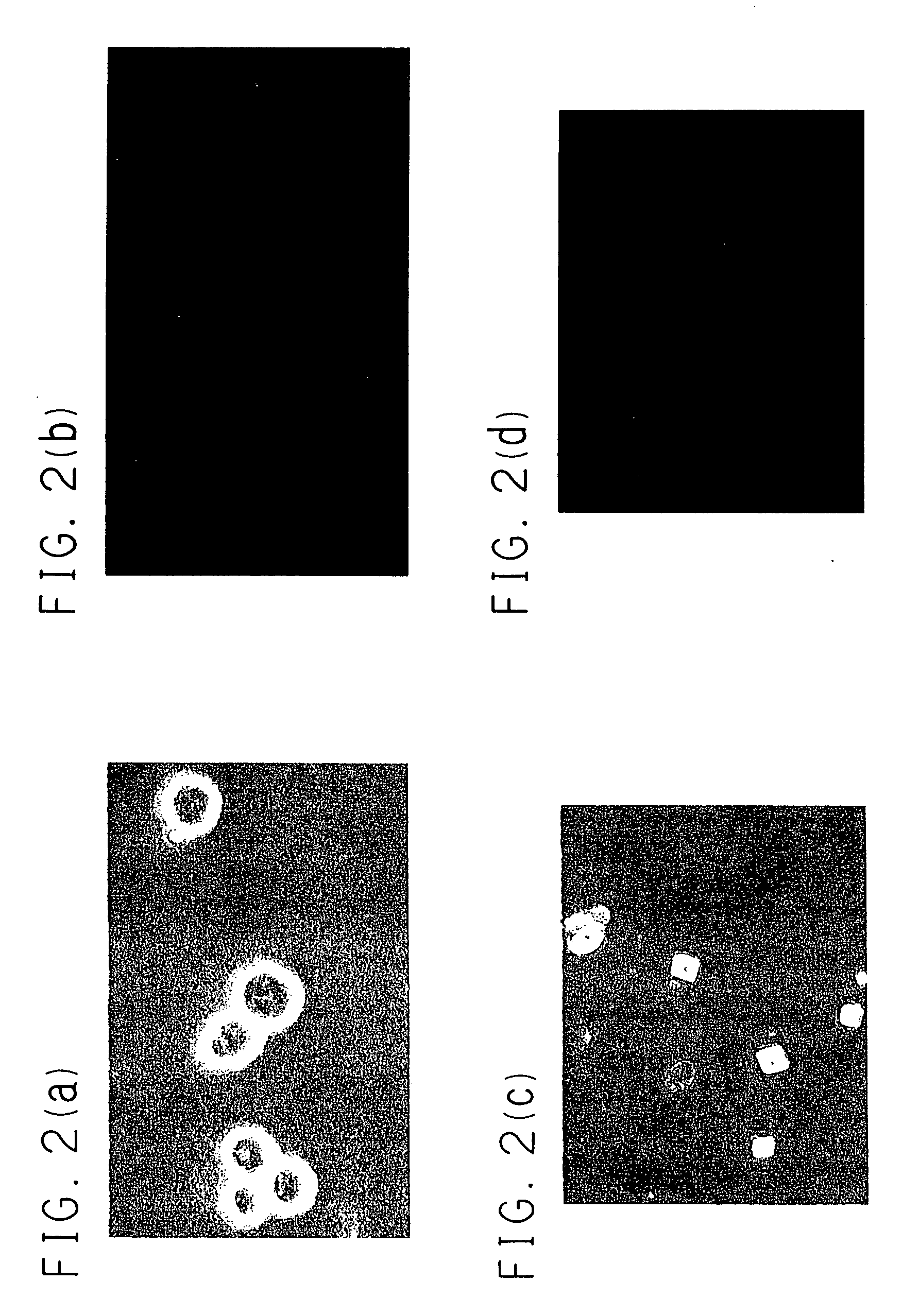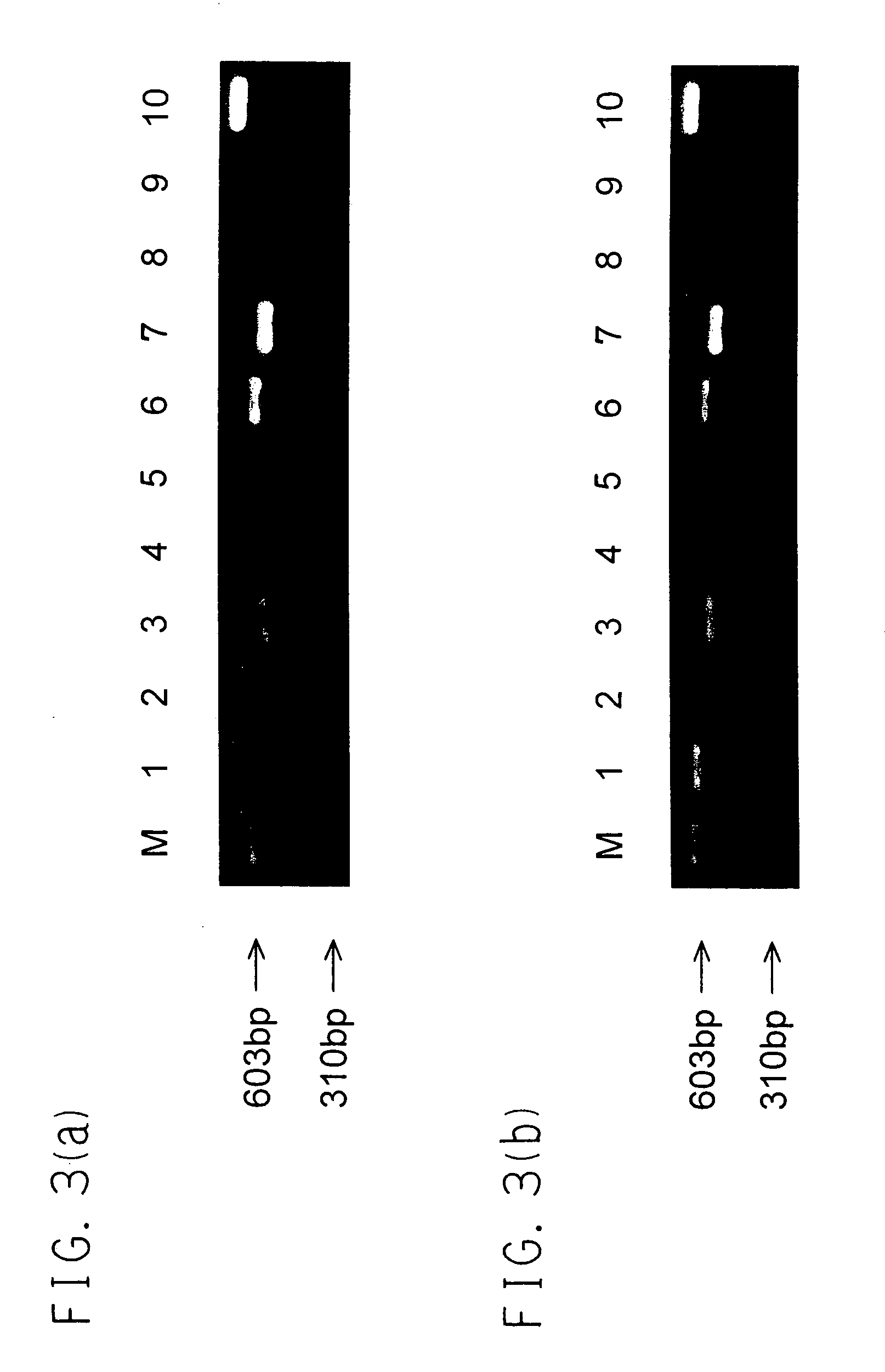Method for proliferating a liver cell, a liver cell obtained thereby, and use thereof
- Summary
- Abstract
- Description
- Claims
- Application Information
AI Technical Summary
Benefits of technology
Problems solved by technology
Method used
Image
Examples
example 1
[0071] Establishment of Human Adult Immortalized Hepatocyte Line TTNT-1
[0072] Crip cells producing retroviral vector SSR#197 (the capacity of the Crip cell to produce retroviral vector SSR#197, i.e. titer, was 1.times.10.sup.5 cfu / ml) were seeded in a flask T-75 at 1.times.10.sup.5 cells / cm.sup.2 and then cultured in 15 ml of DMEM+10% NCS (newborn calf serum) medium. When the cell density was about 90%, the medium was exchanged for 10 ml of DMEM+10% NCS medium.
[0073] Twenty-four hours after the medium was exchanged, 12 .mu.g / ml of polybrene (available from Sigma) was added to a solution obtained by filtering 2 ml of cultural supernatant of the Crip cells containing retroviral vectors SSR#197 with a 0.45 .mu.m filter. The resulting solution was added in exchange for a medium in which 1.times.10.sup.6 cells of primary human adult hepatocytes (catalogue number CS-ABI-3716, available from Dainippon Pharmaceutical Co., Ltd.) had been cultured, to infect the hepatocytes for 4 hours. The s...
example 2
[0075] Excision of hTERT Gene Using Cre Recombinase (See FIG. 1)
[0076] The TNNT-1 cells were infected with recombinant adenoviral vectors AxCANCre (3.3.times.10.sup.8 pfu / ml), which produced Cre recombinase labeled with a nuclear localization signal (NLS) and was unable to make replications (available from Riken Gene Bank, Japan, RDB No. 1748), at MOI (multiplicity of infection)=50. After the infection with AxCANCre for 48 hours, the cells were treated with trypsin and collected, and then only negative cells in which hTERT gene did not express were obtained using FACS Calibur. That was confirmed under a fluorescence microscopy (see FIG. 2(c) and FIG. 2(d)). Further by the RT-PCR method, in the TTNT-1 cells obtained before and after excision of the hTERT gene, expression of genes which were important to metabolism in a liver, i.e. albumin gene, ASGPR gene, bilirubin-UGT gene, CYP3A4 gene, GK gene, GS gene, GST-.pi. gene, human blood coagulation factor X gene and human .beta.-actin ge...
example 3
[0080] The Preparation of Albumin
[0081] Using 2 ml of serum free medium CS-C, 1.times.10.sup.5 cells of hepatocytes obtained by excising hTERT gene in Example 2 were cultivated for 24 hours at 37.degree. C. Then, 100 .mu.l of the resulting cultural supernatant was collected, and it was used to measure concentration of albumin by using Albuwell (available from EXOCELL INC., PA, USA) according to the protocol. As a control, used was the cultural supernatant of hepatocytes which were cultivated in the same way except that 2 ml of DMEM containing 4% fetal calf serum was used as culture medium.
[0082] As a result of the measurement, concentration of albumin contained in cultural supernatant was 37.36 .mu.g / dl in case of serum free medium, and 14.6 .mu.g / dl in case of medium containing serum. Therefore, it is shown that albumin can be produced more by using serum free medium.
PUM
| Property | Measurement | Unit |
|---|---|---|
| Fraction | aaaaa | aaaaa |
| Recombination enthalpy | aaaaa | aaaaa |
| Cell proliferation rate | aaaaa | aaaaa |
Abstract
Description
Claims
Application Information
 Login to View More
Login to View More - R&D
- Intellectual Property
- Life Sciences
- Materials
- Tech Scout
- Unparalleled Data Quality
- Higher Quality Content
- 60% Fewer Hallucinations
Browse by: Latest US Patents, China's latest patents, Technical Efficacy Thesaurus, Application Domain, Technology Topic, Popular Technical Reports.
© 2025 PatSnap. All rights reserved.Legal|Privacy policy|Modern Slavery Act Transparency Statement|Sitemap|About US| Contact US: help@patsnap.com



